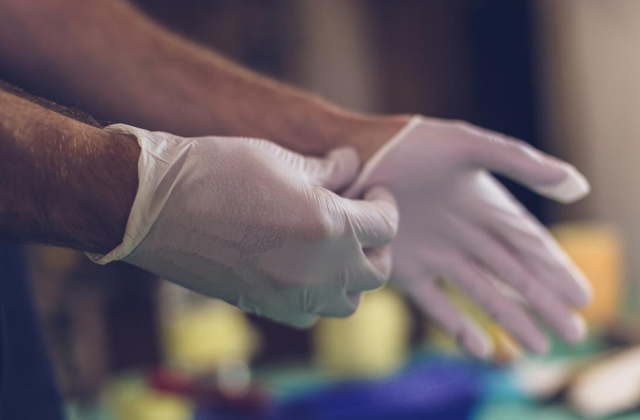Pregnancy is a rollercoaster ride, and not everything is rosy in it. Things tend to take a really ugly turn when certain complications happen unexpectedly. One such complication is a late labour. It might sound outrageous, but many women go through this painful and uncertain condition. You might have reached your due date and yet feel no contractions or your water breaking. You start panicking and wonder what will happen to you and your baby. But worry not, because doctors have been accustomed to these things since ages, and they have come up with quite a few solutions. One such solution is stripping membranes.
Read More: 21 Foods That Induce Labour
All You Need to Know About Stripping Membranes to Induce Labor
What is stripping membranes?
To “strip” your membranes, your doctor will sweep their finger over the thin membranes that connect the amniotic sac and your uterus. This prompts your body to release prostaglandins, hormones that ripen the cervix and can bring on contractions. This procedure won’t be done unless you go past your due date, and even then it isn’t guaranteed to work. However, it does work in quite a lot of cases, and isn’t really a bad thing to do, provided the doctor is experienced and knows the patient’s medical history.
When is it done?
Membrane sweep is done when your pregnancy exceeds your due date and you haven’t felt any contractions yet. If your pregnancy isn’t a high risk pregnancy and you haven’t opted for any other labour inducing methods yet, then you can definitely go for this one. Just make sure to get it done by an experienced doctor and a medical staff. If this isn’t done properly, then there are chances of developing further complications, which we will discuss in the later part of this article.
How is it done?
If you are planning to get a membrane sweep done, then it is important to know and have a basic idea about the procedure itself. Firstly, the doctor checks the estimated delivery date. Then you will be asked to empty your bladder and lie on the labor table. The mattress is tilted towards the left side to avoid supine hypertension. The doctor will then insert a finger into the vagina to feel the cervix and the position of the baby. She checks if the cervix is favorable for carrying out this procedure. If yes, a gentle and circular sweep movement is done inside the cervix to separate the amniotic sac from the uterine wall and the cervix. This promotes the release of prostaglandins and facilitates childbirth. This increases the probability of onset of labor within 48 hours and delivery within one week.
The time of the procedure usually depends on the expectant mother and the overall medical situation at that time, but usually it is carried out between the 39th and the 40th week of pregnancy. Ideally, women should give birth by the 36th week of pregnancy, which is why 39th week is considered as an ideal time to declare the pregnancy and late one and go for an induced pregnancy and birth instead.
Is it safe to do a d-i-y membrane sweep at home?
If you think about doing the membrane sweep at home, then you are not alone in this. A lot of women, due to inadequate medical knowledge and personal reservations, are hesitant to let a strange person insert their finger in their private parts, even for medical purposes. Or maybe, they fear that something bad will happen due to this. A lot of videos are also strewn across the internet, but what we will suggest is that it is not safe to do these things at home. You or your husband/partner/close one doesn’t have an idea about the medical aspects of this procedure, and you might even harm yourself. It is best to consult a doctor and get it done by a professional. Remember, you are getting this done for your baby too.
Read More: Cervidil to Induce Labor: What is Cervidil, Uses and Side Effects?
Things to remember
It is unnatural
Anything that attempts to kick start labour before it begins spontaneously is unnatural. While often touted as an alternative to other methods of induction, a membrane sweep is still a mechanical form of trying to start labour ahead of time. While induction can be necessary and a life saving intervention, there are many babies being born before they are ready due to non-medical reasons. There are many risks involved with inducing labour and it should not be undertaken lightly.
May lead to further interventions
If an induction is necessary for medical reasons, a membrane sweep can seem like a gentler option than medical methods of induction. Yet we know as a matter of fact that many inductions are not being performed purely for medical reasons. There are increasing rates of induction for non-medical reasons such as convenience or post dates (baby has passed the estimated due date).
It is painful
A membrane sweep can only be performed if your cervix is ‘favourable’. This means the cervix must be slightly open (usually 1-2 centimetres dilated) and softening. Stretching the cervix can feel very uncomfortable, and some women describe a sharp, shooting sort of pain. After the membrane sweep, you may experience cramping and spotting or bleeding.
Increased risk of infection and prom
Anything inserted into the vagina has the potential to introduce bacteria, which can travel up to the cervix and beyond to the membranes. If bacteria make its way through the cervix, there’s a chance that an infection may weaken the membranes, causing them to rupture prematurely (prom).
In order words, stripping membranes or membrane sweep is done when it is extremely important to induce your labour, because no other method is working. However, do not attempt it at home and please consult a professional doctor while getting it done. It is a sensitive procedure and must me done with utmost care.
Read More: Prodromal Labor: Are You Experiencing One?













